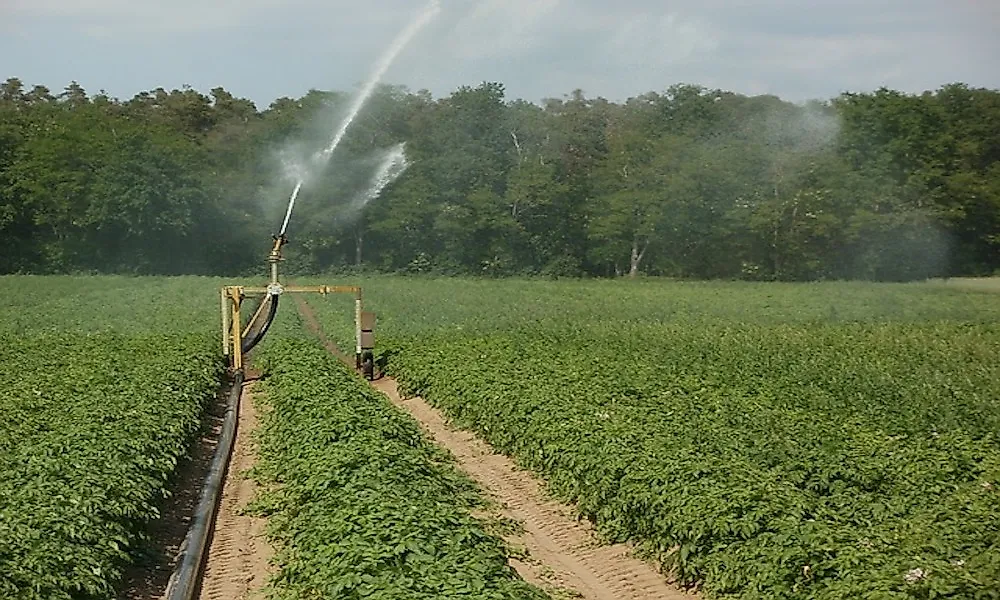What Is The Environmental Impact Of Irrigation?

What Is Irrigation?
Irrigation, sometimes referred to as an irrigation scheme, is the act of redirecting water for a specific purpose. This purpose is usually to water agricultural crops, to maintain landscapes, or to provide much needed water during a drought. Less often, irrigation is used to control dust, to get rid of sewage, and to aid in mining projects. This article takes a closer look at the environmental impact of irrigation.
Direct Environmental Impact Of Irrigation
Because irrigation systems deal with redirecting water from rivers, lakes, and underground sources, they have a direct impact on the surrounding environment. Some of these impacts include: increased groundwater level in irrigated areas, decreased water flow downstream of sourced rivers and streams, and increased evaporation in irrigated areas. Increased evaporation in irrigated areas can cause instability in the atmosphere, as well as increase levels of rainfall downwind of the irrigation. These changes to the climate are a direct result of changes to natural moisture levels in the surrounding atmosphere.
Indirect Environmental Impact Of Irrigation
Irrigation systems also have an indirect impact on the surrounding environment. These indirect effects may not be as immediately noticeable as the direct issues. Additionally, these effects take a longer time to develop and produce longer-lasting changes. Irrigation can result in the following indirect impacts:
Waterlogging
Waterlogging occurs when the soil becomes oversaturated with water, promoting anaerobic conditions. With anaerobiosis, plant roots become unhealthy due to a number of chemical reactions, including a reduction in soil iron and manganese oxides.
Soil Salinization
Soil salinization happens when the salt content in soil increases above normal, naturally occurring levels. Irrigation draws a significant amount of water from an area, moving it to agricultural or landscaped lands. The area that has lost a significant amount of water is often left with concentrated salt levels in the decreased water levels left behind. High salt levels make it difficult for plants to absorb the necessary amount of water and nutrients from the soil.
Ecological Damage
Ecological damage takes longer to occur and notice than waterlogging and soil salinization. One of the most significant causes of ecological damage is in reduced downstream river flow. When river flow is dramatically reduced, it can lead to disappearing wetlands and flood forest ecosystems. Additionally, it results in insufficient drinking, industrial, and municipal water supplies. Because less water finds its way into the ocean, coastal erosion may occur, which damages coastal ecosystems such as mangroves and their habitats. In addition, saltwater makes its way from the ocean into estuaries in increased amounts, which significantly changes the ecosystem and habitat of these waterways as well.
Socioeconomic Damage
Reduced water flow can also have other less obvious effects on socioeconomic health. Specifically, irrigation may lead to decreased fishing and shipping opportunities. One example of reduced fishing opportunities can be seen in Pakistan within the Indus River. Here, water has been over extracted for agricultural purposes. This has threatened the local fish populations which causes an imbalance in the natural food chain. Over extraction of water in the Indus River also affects local human populations, who rely on fishing as a source of dietary protein and economic activity. Shipping opportunities are also affected as large ships and other water transportation vehicles are left with insufficient water to appropriately navigate, reducing trade and economic activity in certain areas.











